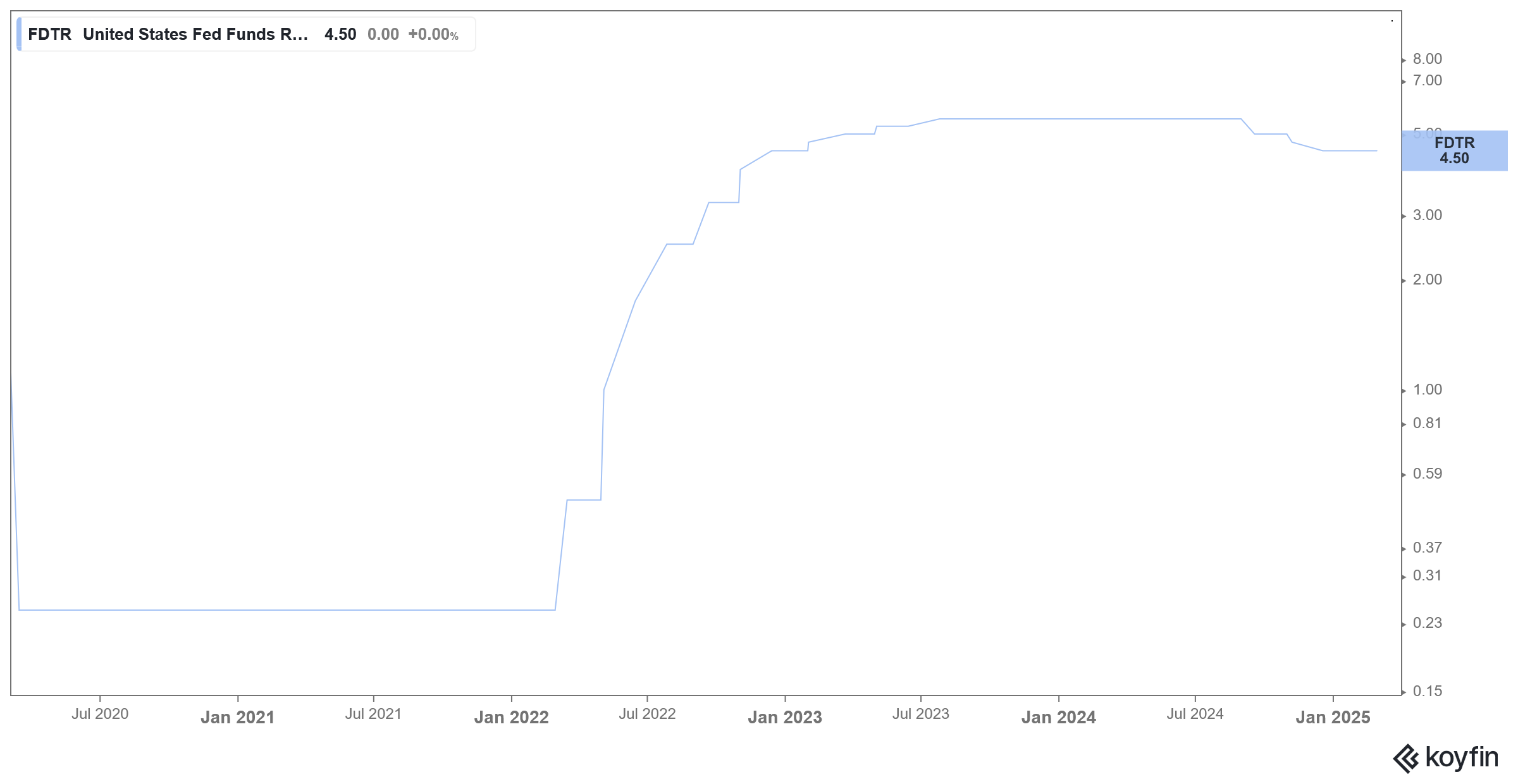Powell Signals a ‘Wait-and-Watch’ Approach to Rate Cuts Amid Tariffs
Please note that we are not authorised to provide any investment advice. The content on this page is for information purposes only.
Fed chair Jerome Powell has signaled a wait-and-watch approach to interest rate cuts amid uncertainty over the Trump administration’s policies. His comments are at odds with market expectations as traders are betting that the US central bank will lower rates multiple times this year.
In his speech for the US Monetary Policy Forum, Powell said, “the new Administration is in the process of implementing significant policy changes in four distinct areas: trade, immigration, fiscal policy, and regulation.”
Powell Signals a Wait-and-Watch Approach to Rate Cuts
He added, “It is the net effect of these policy changes that will matter for the economy and for the path of monetary policy. While there have been recent developments in some of these areas, especially trade policy, uncertainty around the changes and their likely effects remains high. As we parse the incoming information, we are focused on separating the signal from the noise as the outlook evolves. We do not need to be in a hurry, and are well positioned to wait for greater clarity.”
The current Fed fund rates are 4.25%-4.5 %, the same as in December 2022. The US central bank cut rates by 100 basis points last year after increasing them gradually in the previous two years.
While it began with a 50-basis point rate cut in September, it followed up with 2 cuts of 25 basis points at subsequent meetings. At his press conference following the December FOMC meeting, Fed chair Jerome Powell said, “Today was a closer call but we decided it was the right call.” The Fed kept rates unchanged at the meeting in January and is expected to do the same at its meeting later this month.
Traders Expect Three More Rate Cuts in 2025
Meanwhile, traders see the Fed embarking on rate cuts beginning in July. According to the CME FedWatch Tool, while traders are almost equally divided on whether the Fed would cut rates by 25 basis points in May, only 13.8% of them see rates at current levels after the June meeting.
27.4% of traders see rates between 3.25%-3.50% by the end of this year, which would imply 100 basis points of cumulative rate cuts from here. 19.9% of the traders see rates between 3.50%-3.75% % – a 75-basis point rate cut, while 23.4% of traders bet that Powell and Co. will lower rates by 125 basis points.
Fed Has Been Worried About Trump Administration’s Policies
To be sure, this is not the first time that Powell has talked about the Trump administration’s policies, and the Fed touched upon the issue previously also. The minutes of the Fed’s December meeting showed that Committee members were looking at the “likely effects of potential changes in trade and immigration policy.”
The January meeting minutes went a step further and said, “Business contacts in a number of Districts had indicated that firms would attempt to pass on to consumers higher input costs arising from potential tariffs.”
While in his first tenure, Trump claimed that the tariffs are borne by exporting countries, economists disagree and say that the US consumer bears them.
In one of his interviews, Trump said that he cannot “guarantee” that his tariffs won’t hurt Americans. Even the legendary Warren Buffett took a swipe at the tariffs, saying, “Over time, they are a tax on goods. I mean, the tooth fairy doesn’t pay ’em!”
He added, “And then what? You always have to ask that question in economics. You always say, ‘And then what?’”
Powell Is Not Worried About the Economy
The other key takeaway from Powell’s speech was that the Fed is not too worried about the economy. The Fed chair began his speech by saying, “Despite elevated levels of uncertainty, the U.S. economy continues to be in a good place.”
Powell acknowledged that “recent surveys of households and businesses point to heightened uncertainty about the economic outlook.” He, however, added, “It remains to be seen how these developments might affect future spending and investment. Sentiment readings have not been a good predictor of consumption growth in recent years.”
Notably, several retail companies have warned that the tariffs would lead to lower consumption. There are multiple indicators that show a softening of the US economy after the stellar growth in 2024. Most recently, the February payroll data showed that the world’s largest economy added 151,000 jobs in the month, which was below estimates.
Speaking with CNBC, US Treasury Secretary Scott Bessent on Friday also acknowledged that there are signs of softness in the economy.
According to Bessent, “Could we be seeing that this economy that we inherited starting to roll a bit? Sure. And look, there’s going to be a natural adjustment as we move away from public spending to private spending.”
He added, “The market and the economy have just become hooked. We’ve become addicted to this government spending, and there’s going to be a detox period.”
Powell Has Also Warned About Unsustainable Debt Position
Last fiscal year, the US budget deficit was $1.8 trillion, and while it is still below the pandemic highs, the deficit is significantly higher than what it was prior to the pandemic.
There hasn’t been any respite this fiscal year, and in the first two months, the US budget deficit soared 64% YoY to $624 billion. Higher US interest rates are only adding to the burden, and the US government spent $1 trillion on interest payments on the ballooning national debt last fiscal year.
Fed chair Jerome Powell has also talked about the need to address the rising US debt situation. In his interview with CBS 60 Minutes last year, he said, “The U.S. federal government is on an unsustainable fiscal path. And that just means that the debt is growing faster than the economy.”
He added, “I think the pandemic was a very special event, and it caused the government to really spend to ward off what looked like very severe downside risks. It’s probably time, or past time, to get back to an adult conversation among elected officials about getting the federal government back on a sustainable fiscal path.”






